
Lancaster B II

The Avro Lancaster is well know and history can be found almost everywhere so I'm not going to go into great detail here concerning the history and development of the type. What I am going to do is quote what William Green said in his volume The Famous Bombers of the Second World War "Many aeroplanes employed by the combatants of the Second World War became famous; few were truly great. Greatness is a quality which cannot be instilled in an aircraft on the drawing board or the assembly line. A great aircraft must have that touch of genius which transcends the good, and it must have luck - the luck to be in the right place at the right time. It must have flying qualities above the average; reliability, ruggedness and fighting ability, and, in the final analysis, it needs the skilled touch of crews to which it has endeared itself. All these things the Lancaster had in good measure. It was also remarkably adaptable and a superlative bomber on every count, and of all the great aeroplanes which fought out the war, there are many who would insist that this was the greatest".
The BII Variant
In order to insure a continuous
flow of Lancasters to the squadrons in the event of an
interruption in supplies of the Merlin engines, an alternative
Lancaster variant, the Mk II had been planned concurrently
with the Mk I production. This version being powered by four
Bristol Hercules VI or XVI air cooled radials rated at 1,735
h.p. at 500 ft. and 1,725 h.p. for take off. After A.V. Roe
had built two prototypes with these engines the production of
the Lancaster II was entrusted to Armstrong Whitworth Aircraft
but only 300 examples of this version were built, for supplies
of the Merlin had been assured thanks largely to the
availability of the Packard built Merlins after the United
States had entered the war. The Lancaster II attained a
maximum speed of 270 m.p.h. and carried a 12,000 lb. bomb load
over a range of 1,000 miles.
The Kit
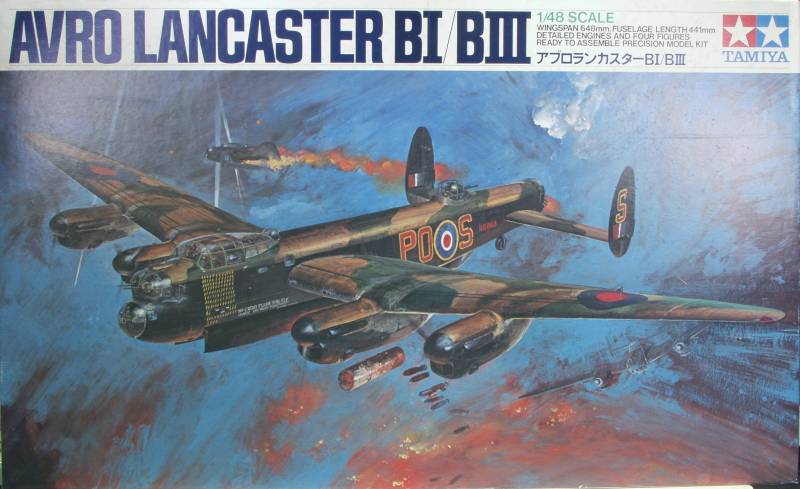
When Tamiya released an updated version of the Lancaster BI / BIII kit in 2009 not only did it include some additional parts to make both early and late variants, rumors had it that they also dealt with improving some of the fit issues as well. I decided to purchase one of the newer kits and yes there does seem to be some fit improvement. Not too long after that I found the Paragon BII conversion kit and since much of the fit issues centered around the engines and engine nacelles I felt the old kit would make a good candidate for the conversion.
The Tamiya Lancaster has been around for quite a while, I could not find a date on or in my box but I believe the kit was released around 1974. As such it features raised surface detail for the most part and it will not fit together as well as current kits. That being said it's still an impressive kit and the only one were likely to see in this scale. I do not remember when I acquired my kit but it is undoubtedly an early release.
The kit comes in a large and sturdy two part top open box with decent artwork on the top. Inside the box the sprues are all bagged either individually or two to a bag. The only exception is the fuselage halves which are nestled together along one side of the box with an insert that keeps them in place and together at one end.
The parts are molded in black which I personally think is harder to work with even though it probably does ease the job of painting some. There is only a hint of flash, at least on my older kit, I can't say if the newer releases are as good in that respect. The surface detail for panel lines and rivets is raised. Only the crew door on the fuselage and the demarcations for the control surfaces are recessed. The recess along the front of the ailerons and elevators is especially well done which makes it look as if these parts are separate rather than part of the wing or tail. The rivets are extremely fine, finer than those found on many 1/72 scale aircraft produced during the same time frame. I actually think the raised detail much better represents the surface texture of the Lancaster better than all recessed would have, of course the downside is that any sanding will eliminate this detail and make restoring most difficult.
The control surfaces are all fixed and the fabric areas are represented by rib tapes with no drooping fabric effects. I found no surface blemishes on any of the outer air frame parts other than some plastic flow marks which should not show under a coat of paint.. The interior is reasonable well appointed from the astrodome forward with molded in structure and electrical panels and wiring on the inner fuselage. The instrument panel is void of detail with a decal to represent the instruments. There are a couple of ejector pin marks that need to be dealt with in this area. The turrets have a medium level of detail which certainly could be embellished if desired but at least there is something there that looks proper. The main gear bays are closed in by structural detail that assembles first, the gear is mounted to it and the whole assembly drops in place into the wing and the nacelles assembled around it. The Bomb bay also has a reasonable level of surface detail should you wish to pose it open and a full compliment of bombs to fill it. Its best that the bombs be installed if you leave it open as the bombs just mount on protrusions from the bay roof.
The kit comes with two engines should you wish to open up a couple of cowlings. The wheels have nice hub and tread detail but they are not weighted. The main gear doors are free on ejector pin marks, the bomb bay doors did not fair as well. The fuselage has alignment pins but they are few and far between and some extra tabs glued on during the assembly process would probably guarantee a better join. The wings have interlocking tabs which extend completely across the fuselage and should provide a strong solid joint and structure. The kit does have a couple anomaly's, it uses the lower profile "early" bomb aimer's glazing, so if you are building a later version this part is wrong and it comes with paddle blade props which were common on later versions and would technically wrong on an early version but only folks with AMS will be troubled by this.
The kit contains, by my count, 240 parts molded in black. See below. The kit includes one sprue of parts molded in gray and these are figures, two seated and a third in a prone position and a standing figure giving the "V" sign. The detail is a little soft on them but they should look reasonable painted up.

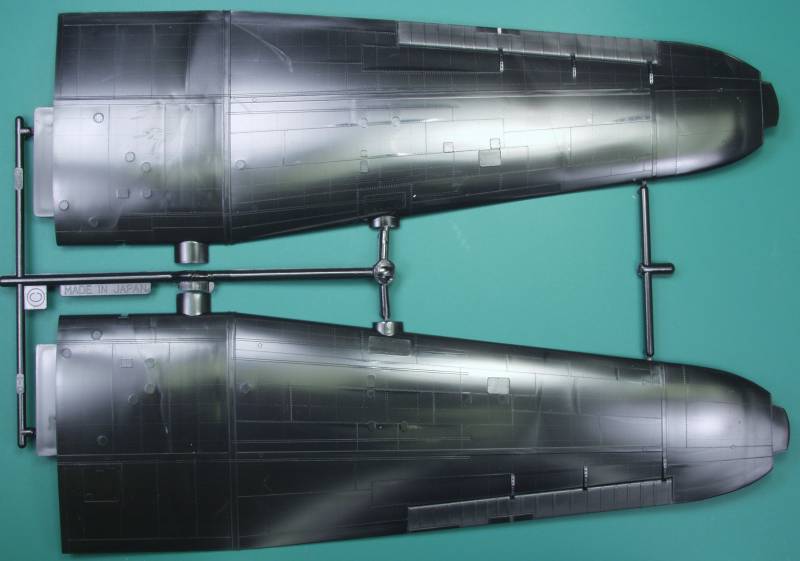
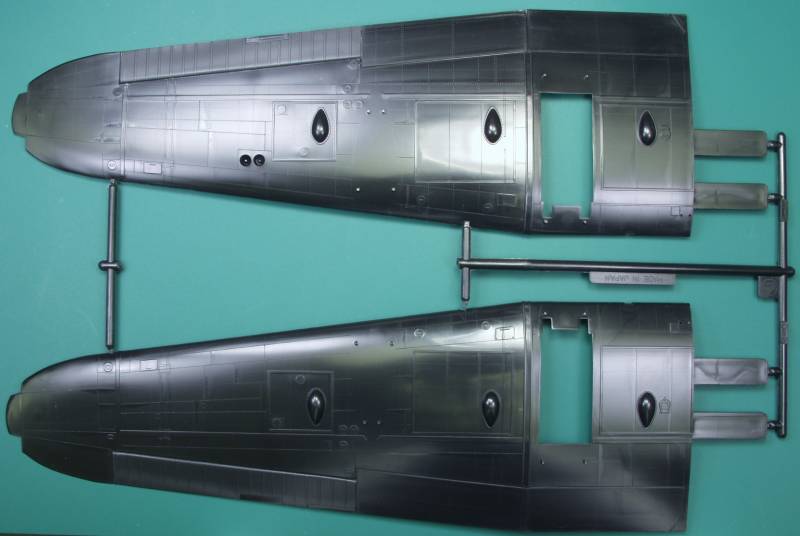
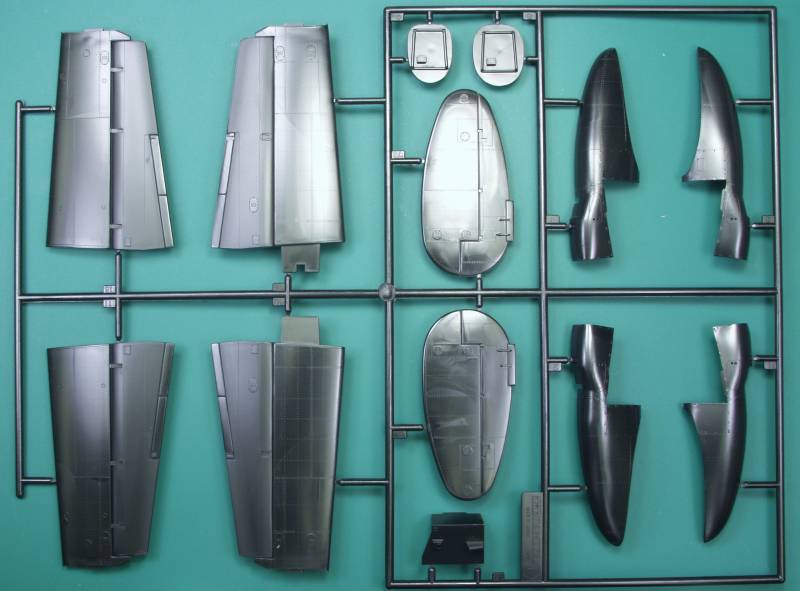
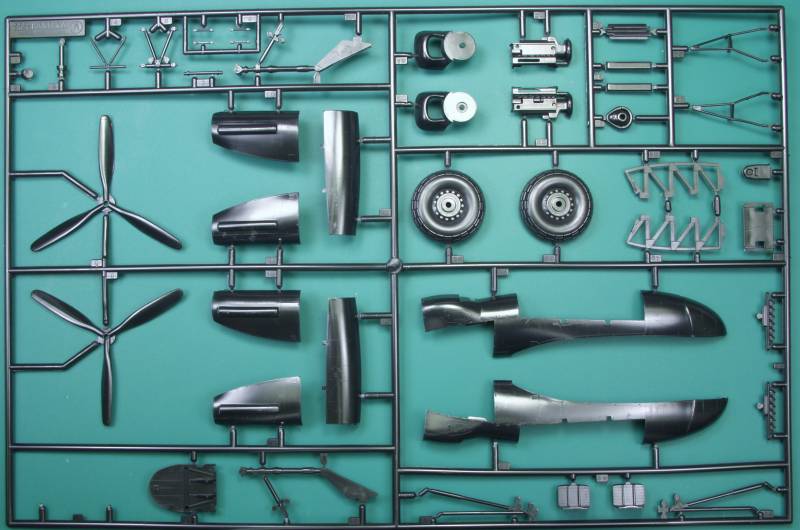
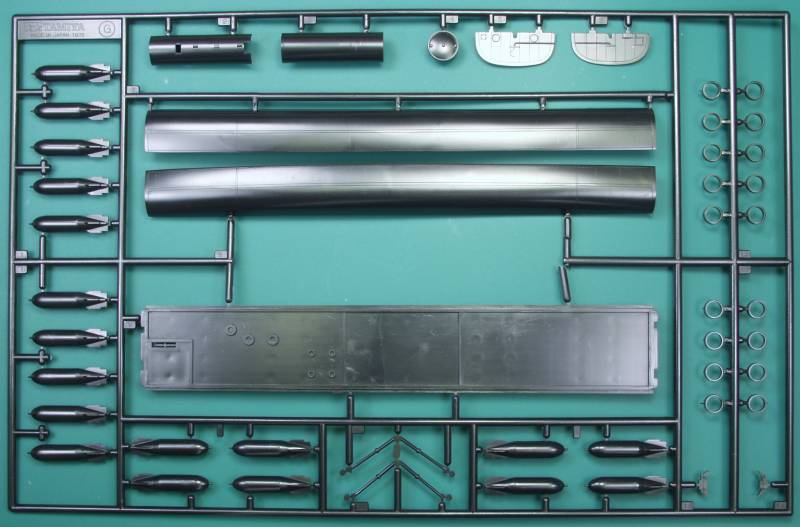
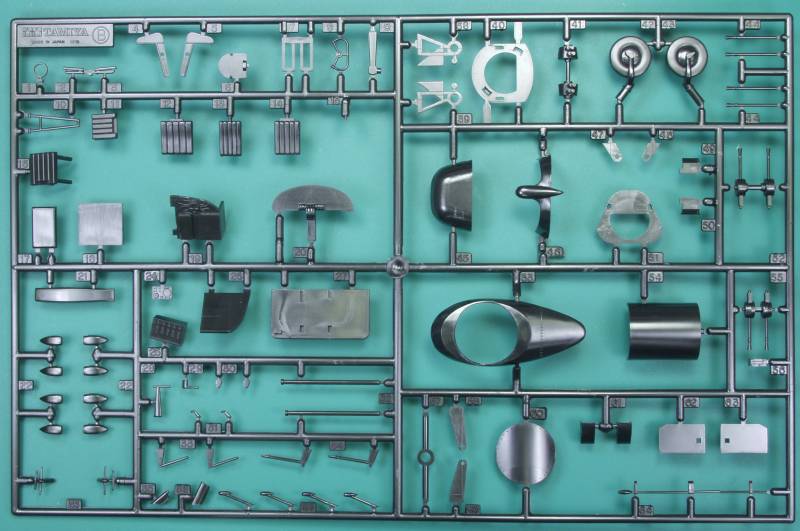
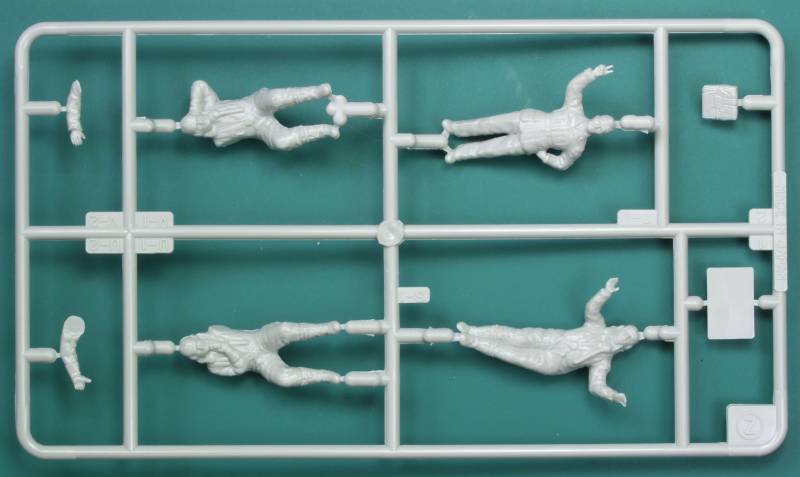
The clear parts are a little thick by today's standards but very clear and even though they were bagged separately one of my turrets had an abrasion on it. There are thirty nine clear parts but some are optional. See below.
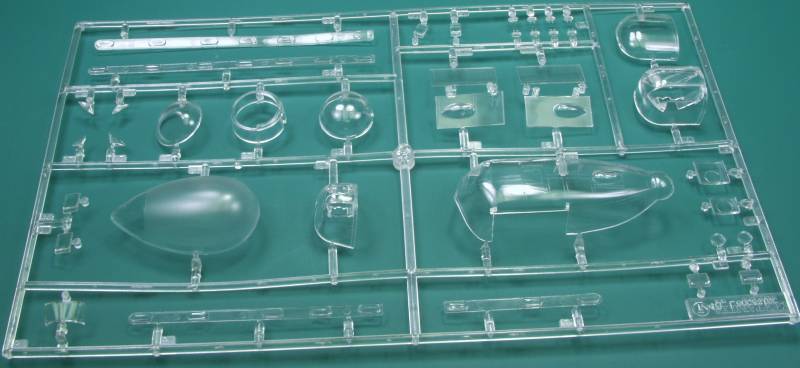
The decals include markings for two aircraft and like most Tamiya decals look a bit thick. The roundels for the fuselage, in spite of being multi part are still out of register. There is a goodly amount of stenciling. As can be seen my decals have yellowed a bit with age and if I can find an aftermarket sheet I will probably use it instead of the supplied decals. See below.
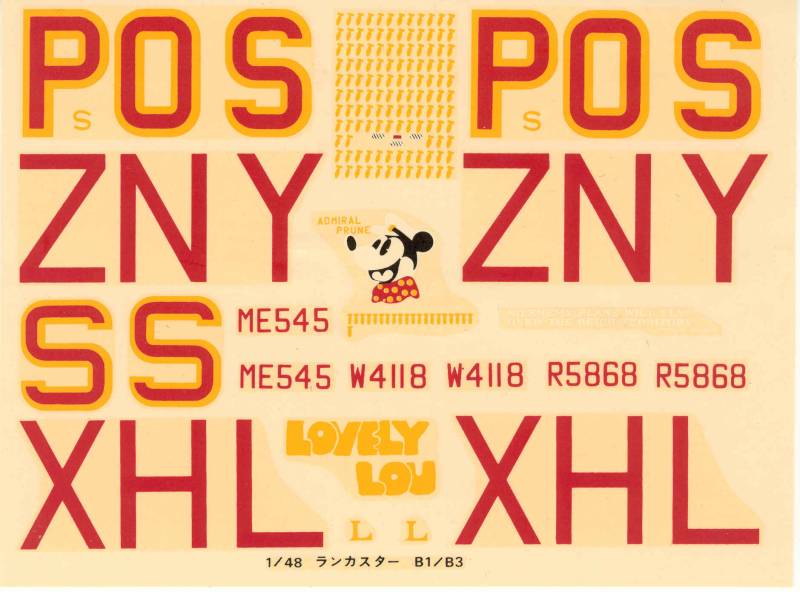
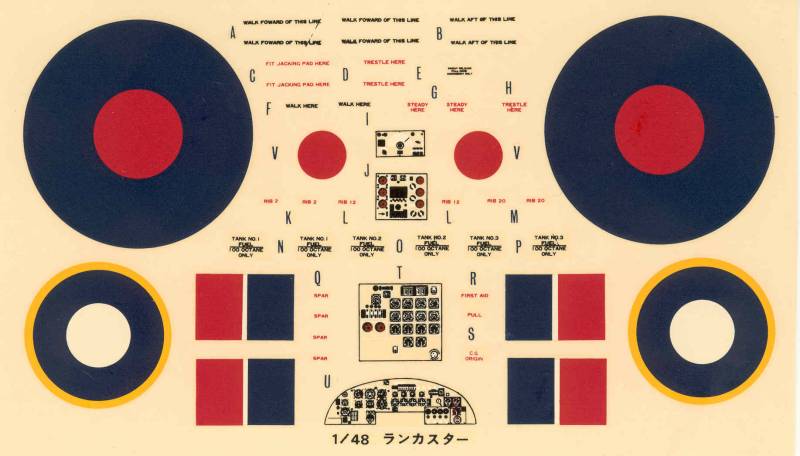
The instructions are a long page folded to create eight panels. Two of those are devoted to the history of the Lancaster, four to assembly drawings and instructions and two to painting and markings. There is no paint chart, colors are called out through the instructions and the painting and marking section gives general guidelines for colors of the internal and external areas if the air frame.
After Market Goodies
Eduard makes a lot of photo etch sets to dress up this kit including a Big Ed set that will easily double the cost of the kit. There are also individual sets for the interior, exterior, bomb bay and others. Personally I'm only planning on using Eduard's color zoom set for the cockpit.
The main parts that are required for this conversion is the Paragon set. It consists of four engine cowlings, four radial engines, complete outer wing nacelles, partial inner wing nacelles, propeller blades and spinners, air intakes and oil coolers and four hedgehog exhausts. The casting are very nice with no surface defects that I could find. In the photo two of the cowlings have already been freed from the mold base which is a bit tricky since it's attached to the front of the cowl but it can be done just take your time with it. Unfortunately since I acquired this set Paragon closed up shop and all their sets are now demanding collectors prices on eBay.
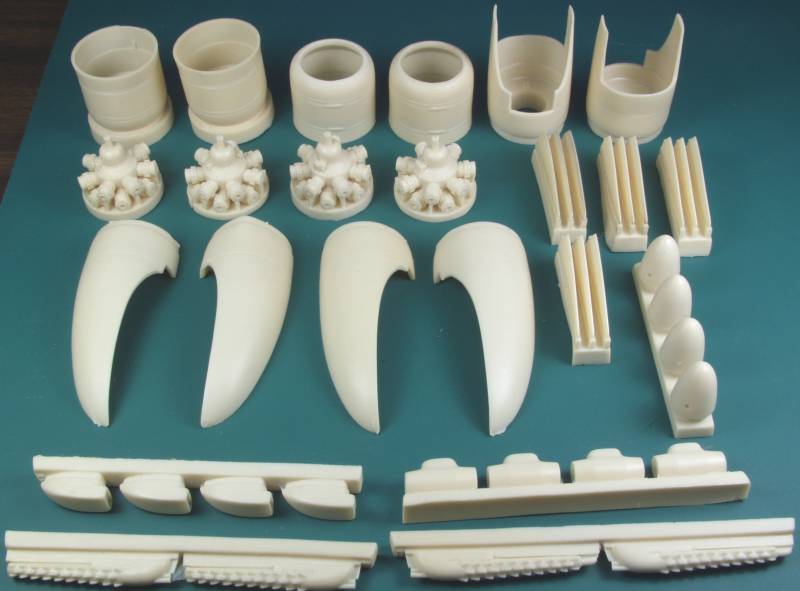
I'm also going to use another Paragon set which provides bulged bomb bay doors for 8000 pound bombs and includes the ventral turret, which according to my resources was installed on most of the BII aircraft. The set provides the parts shown below and since the bomb bay doors are separate on the kit there is no major cutting involved. As above the casting of the parts was excellent.
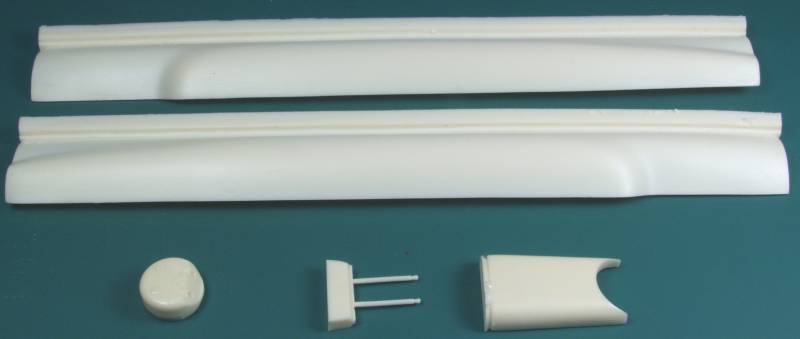
Conclusions
The Tamiya kit, in spite of its age has held up quite well and builds in to a stunning replica of this famous aircraft. It does not go together like their current releases with the engine nacelles being singled out by most builders as being the most problematic area concerning fit. That said other than the large parts count there is no reason most modelers with a moderate amount of experience should have any difficulty building a nice looking model from this kit. Recommended !
Links to kit build or reviews
Build / Reviews can be found here, here and here.
References
Famous Bombers of the Second World War by William Green
Profile Publications #235 Avro Lancaster Mk II by Bruce Robertson
Flying Zone Publications "The Lancaster Explored" CD